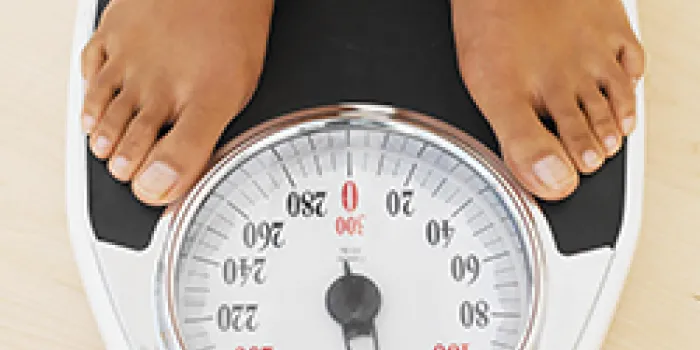The term “basal metabolic index,” or BMI, is bandied about in popular health magazines and at fitness centers. In fact, before you hire a personal trainer, your BMI score may be determined. But you may be wondering what it is and if there is real science behind it. According to the US Centers for Disease Control and Prevention (CDC), BMI is legitimate.
What it is, why it matters
Like your index finger, or pointer, BMI points to something. It indicates body fatness or obesity. By plugging your height and weight into a mathematical formula, healthcare professionals can derive your BMI, a good assessment of your body fat. There are also adult BMI calculators available online. Determining your BMI can then be used to predict your risk of developing medical conditions that go hand in hand with excess weight. The normal range for BMI in adults is 18.5-24.9, says the CDC. Values between 25 and 29.9 indicate a person is overweight. When the BMI climbs above 30, a person is considered obese.
With 1 in 3 American adults diagnosed as obese, weight gain is a national concern. Carrying extra pounds on your frame is detrimental to your health. Even just a few pounds can increase the pressure on joints, a concern for people with bleeding disorders. Studies have shown that being overweight can set you up for a slew of health complications, including these listed by the CDC:
- certain cancers
- cardiovascular disease
- type 2 diabetes
- gallbladder disease
- high blood pressure
- high cholesterol
- osteoarthritis
- respiratory problems, including sleep apnea (periods where you stop breathing temporarily)
- stroke
Other factors
Although BMI is a reliable indicator of body fat, other factors should be considered. For instance, if you lift weights or are very athletic, your body build is more muscular, which could result in a greater BMI. Further, the National Heart, Lung, and Blood Institute (NHLBI) recommends considering waist circumference, which is correlated with body fat; your degree of inactivity; and other diseases and conditions you may be juggling.
Calculating kids’ BMI
Statistics show that kids these days are less active and have more body fat at a younger age. About 1 out of every 5 children age 2-19 are obese, says the CDC. To measure BMI in children, healthcare providers use the same formula, but it’s interpreted differently. You can also visit an online kids' BMI calculator. Because children have different amounts of fat at different stages, and because fat deposition is different in girls vs. boys, BMI is age- and gender-specific for children up to the age of 20.
Lowering your BMI
If you or members of your family have a confirmed diagnosis of being overweight or obese, there are many steps you can take to regain your health and well-being. A 2014 study in PLoS Medicine by Finnish researchers showed that when young adults lost even a few pounds, their risk for developing certain metabolic diseases dropped. Losing extra body fat lowered levels of blood-based metabolic risk factors, such as low-density lipoprotein, the so-called “bad” cholesterol; amino acids associated with diabetes; and proteins linked to chronic inflammation and impaired liver function.
The two key ways to lower your BMI and get back within the healthy range are through dieting and exercise. In this day and age, opportunities for healthy eating and physical activity abound. Find a healthy diet plan that works for you and that your physician endorses, then get the whole family on board. (See " Mediterranean Makeover," HemAware, Summer 2014.
If you have a bleeding disorder, check with your hematologist about safe activities. Typically, walking and swimming programs are good for beginners. Walking is weight-bearing, so muscles, connective tissues and bones are strengthened. In contrast, swimming and aquatic exercise are gravity-free, but help you improve flexibility and endurance. With some discipline and a workout buddy, you can improve your BMI. At the same time, you’ll look and feel better, too.

